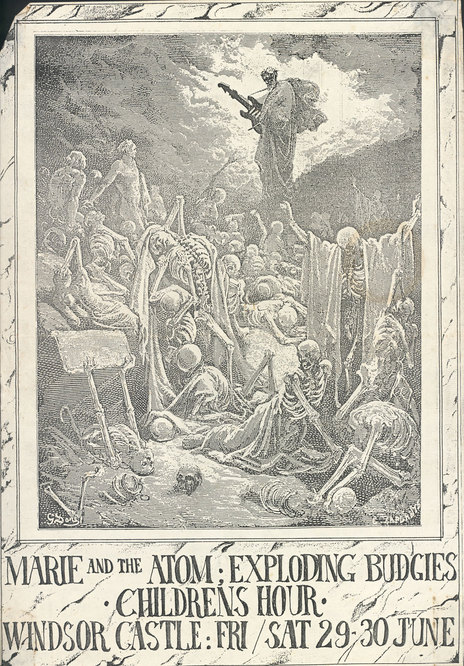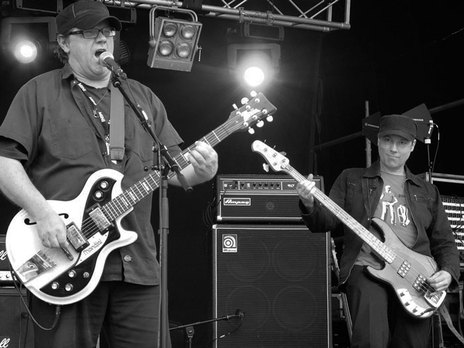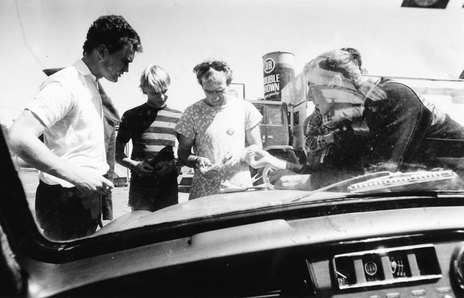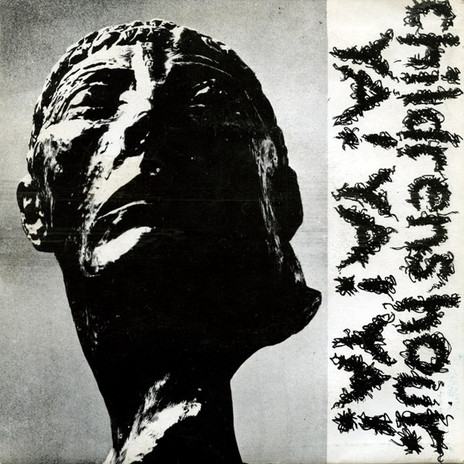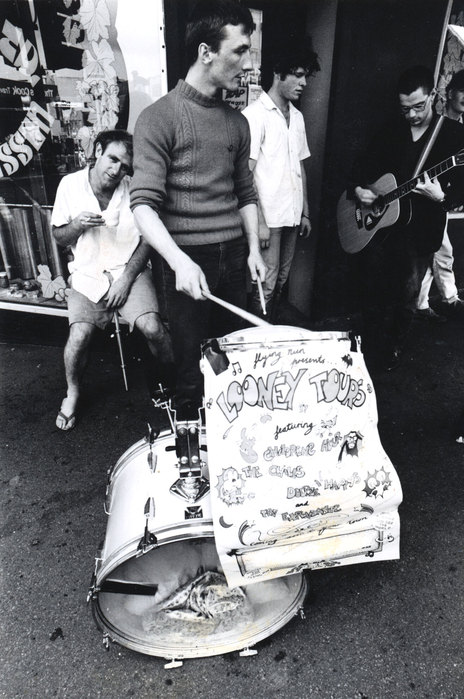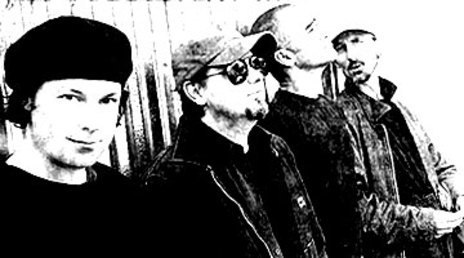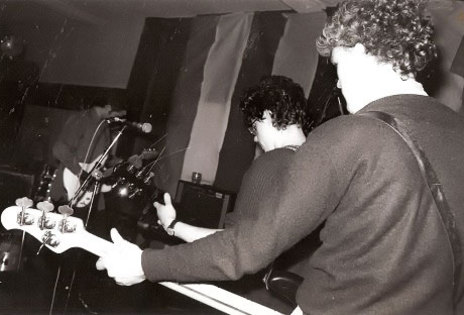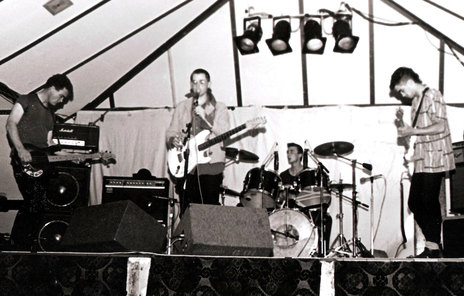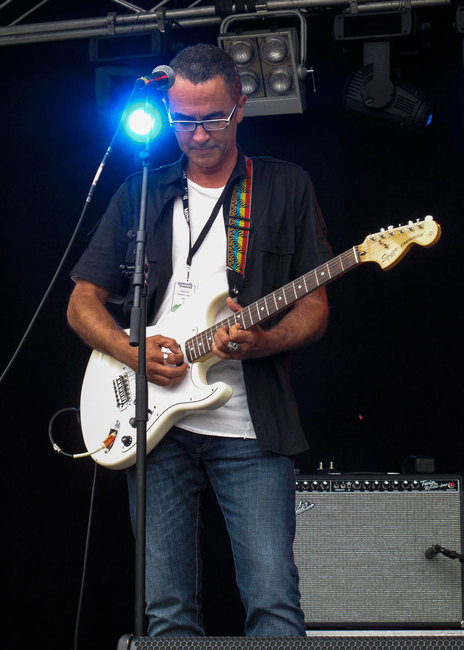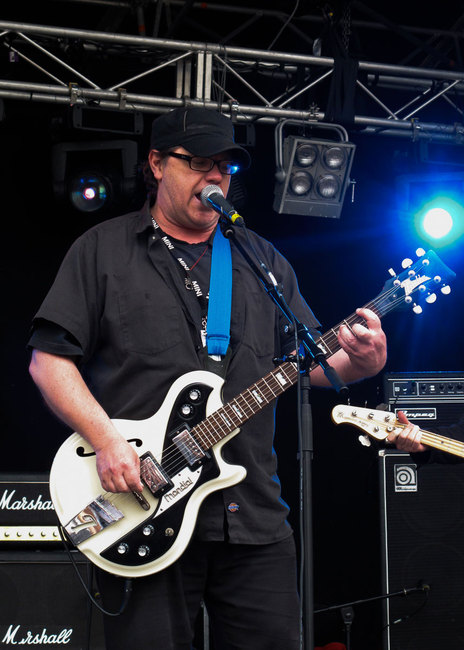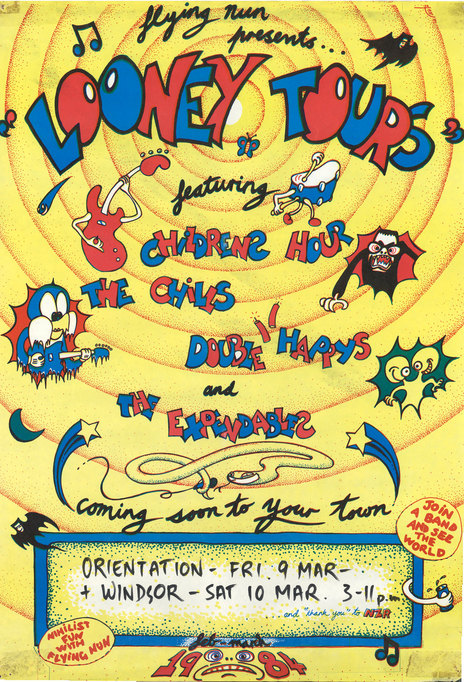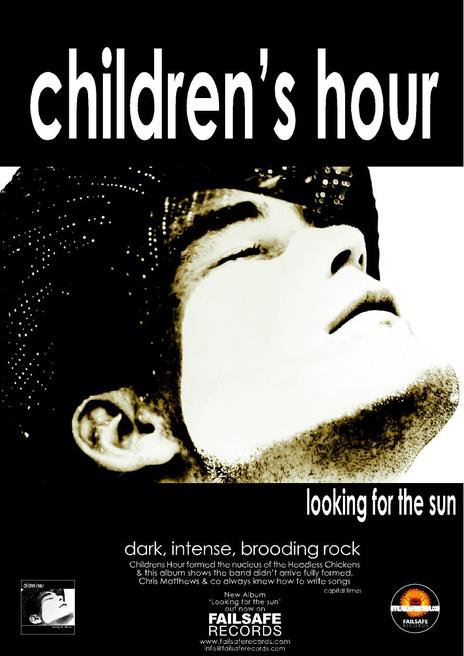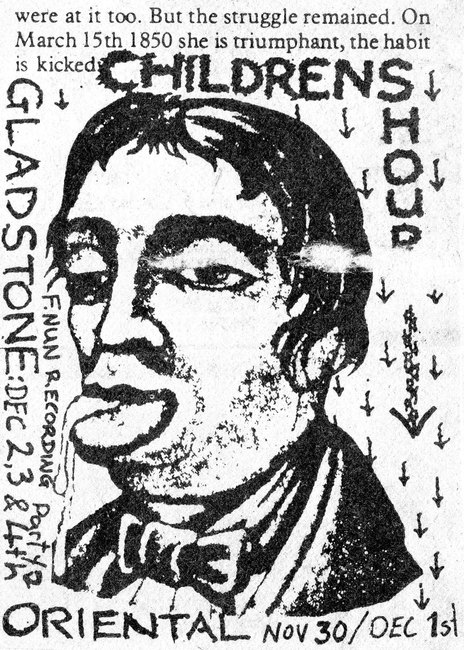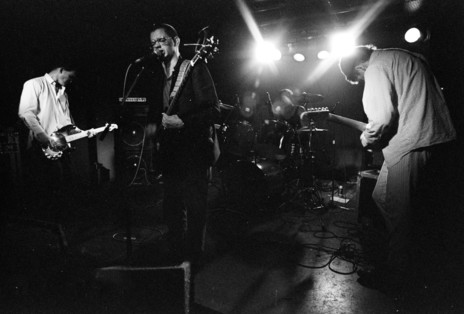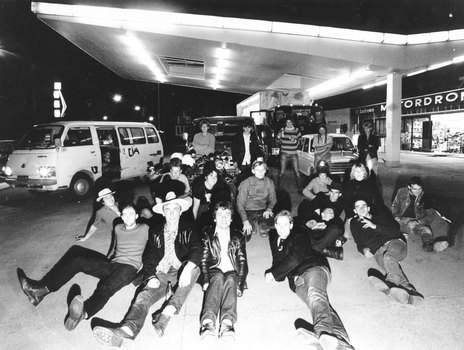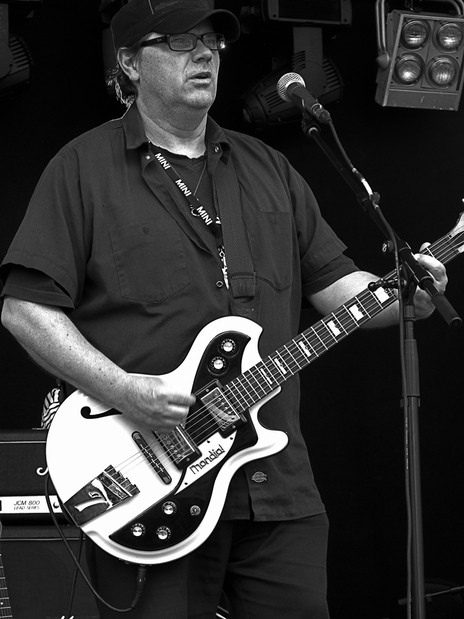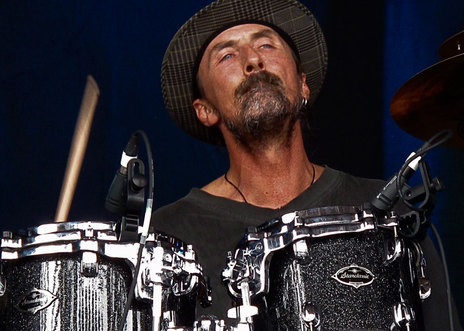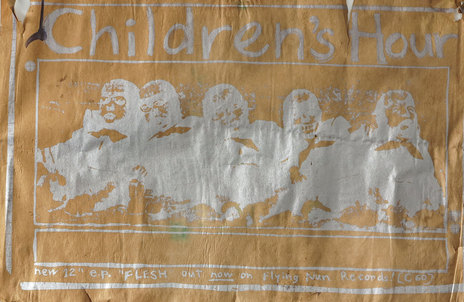Aligning with rising indie label Flying Nun Records, Children’s Hour fired a thunderous EP (Flesh) and magnetic single (‘Washed Away’ b/w ‘Stuck Pig’) into New Zealand shops in 1983 and 1984 that firmly placed them in the strong New Zealand post-punk tradition of The Features and The Gordons.
The music they chose to make in those months spoke the truth of punk.
But this was no band of newbies. The emerging quartet had recent history in Auckland and Whangarei power pop and punk rock groups Prime Movers, The Gordon Bennetts, The Pleasure Boys and Stalag 13. What they found within themselves in late 1982 into 1984 was at stark odds with their recent past. The music they chose to make in those months spoke the truth of punk; their own twisted obsessions used less straightforward rhythms and lyrical ideas, inspired by the deluge of left-field post-punk sounds coming out of the United Kingdom.
While post-punk has increasingly been used in recent years as a term referring to the wider cultural movement enabled by punk – something that is not sound specific – the term originally referred to a sound that was an often dark, often propulsive and skewed punk-stung art-rock that was bass and drum-driven with sonically fractured guitar and/ or synths. In New Zealand it was mostly coming out of Auckland and Wellington, emerging a little later in the North Island provincial centres of New Plymouth and Palmerston North.
Connected in sound and intent with the fast evolving music coming out of the United Kingdom on independent labels, the post-punk sound began here with The Features and Shoes This High in 1979 and was particularly strong in Wellington in the early 1980s where The Gordons were semi-resident, then burst out with Alms For Children, Herco Pilots, Danse Macabre, The Bombers, Tall Dwarfs and Nocturnal Projections in 1981 and 1982 in Auckland.
Looking for the sun
Sometimes you don’t know what you’re looking for until you see and hear it. In the middle of 1982, Grant Fell, who’d been playing keyboards in The Pleasure Boys, headed out to a family function. That’s where he first spied Johnny Pierce, a bass guitarist who’d moved south from Whangarei and a northern punk band called Stalag 13.
“Johnny and I shared sibling girlfriends,” Fell explained to 95bFM’s Flying Nun Extended Play in 2012. “My girlfriend was the stepsister of his girlfriend and we went to this family function and he was dressed in black, this full black suit and hat and black boots. I thought ‘this guy’s awesome,’ you know, really interesting.
“He said, ‘shall we make some music?’ So I went around to his place in Mission Bay in one of those old round Art Deco houses. We went down to his basement and he had a little two-track there. I started playing guitar lines and I’d never even really played guitar before.
“Johnny and I began getting a few tunes together then Bevan Sweeney came along on the drums. He’d been playing around in a few bands and we knew he was a good drummer. We started jamming and Johnny said, ‘Chris Matthews, the drummer for the Prime Movers, he’s interested in seeing what we were doing. He plays guitar as well and sings and he writes good songs.’ ”
Pierce had met Matthews through his flatmates, Nocturnal Projections, a galvanising post-punk group fresh in Auckland from New Plymouth. Peter Jefferies, Nocturnal Projections’ singer, had taken the Primer Movers' drum stool on a double bill one night at The Reverb Room to allow Chris Matthews to step out front for ‘Burning Boats’, a song he’d later take to Children’s Hour. The Prime Movers drummer headed home with Nocturnal Projections that night and never left, taking up residence in the group house. That’s where he met their flatmate Johnny Pierce.
Fell: “Chris Matthews was playing with The Prime Movers at the time and they were all gravitating around Nocturnal Projections, a pretty amazing band from New Plymouth. They were very Joy Division-ish in the way they’d sing in a haunting big vocal. I started going to their gigs and we started hanging out together.”
Matthews was keen to step out of a supporting role so he joined the embryonic trio in their Mission Bay basement.
Matthews was keen to step out of a supporting role so he joined the embryonic trio in their Mission Bay basement. The musical chemistry soon became apparent to them all.
Grant Fell: “Straight away we knew we had something pretty good. The band would do the music then Chris would go away and come back with the whole written piece. He’d come up with melodies and lyrics.”
‘First Time’ and ‘Go Slow’ were two of the first songs that Children’s Hour came up with. “[They were] punky, choppy, rhythmic things with great drumming [from Bevan] and a driving bass player. Chris was a great guitar player.” Fell in turn provided “weird atonal stuff” on guitar.
Children’s Hour found new practice rooms up the stairs at Terry King’s Progressive Studios on Anzac Ave in the inner city. As the new group worked through the three songs they’d written so far, Chris Knox and The Stones’ Wayne Elsey burst into the room. Elsey’s trio were recording the Another Disc, Another Dollar EP with Knox and Doug Hood just down the corridor.
“You guys are great,” Chris Knox told them before going on to identify the members and their previous groups. “You’ve got to come and support The Stones next Friday night at The Rumba Bar.” It was nearly Christmas 1982 and Children’s Hour only had three finished songs. They wrote and rehearsed five more and joined Wellington’s First Fifteen in supporting The Stones two days later.
Doug Hood did sound for them that night and signed on as manager. They were an absolute revelation, he remembered. “As soon as I saw them I knew we had to have these guys on Flying Nun.” A manager, record label and national community, all in one night – that was one hell of an encounter.
Flying Nun Records, especially the Chris Knox/ Doug Hood driven Auckland end in the early 1980s, featured a surprising and diverse array of sound, art and personality, markedly at odds with the subsequent Dunedin and South Island-centric and reductive nationalistic retellings of the 1990s and early to mid 2000s, which would distort and censor parts of the label’s history.
A lot of those early records still sound un-pop and fresh and timely. Prominent in that weave is the dark arty strand of This Sporting Life, Fetus Productions, Children’s Hour and later This Kind Of Punishment, Headless Chickens, S.P.U.D. and Skeptics, who often represented the post-punk sound explorers and punk lifers whose musical instinct was to unsettle and provoke. Musicians who’d had a musical life before their time on Flying Nun Records.
“We weren’t that unusual for Auckland or even Wellington, but Dunedin had a very different scene altogether from the rest of the country, really. I guess you could say the Dunedin bands were different from us,” was how Chris Matthews put it in 2012.
“There was already quite a strong Dunedin-Christchurch sound. We sounded like some of the great indie post-punk bands of the time – Joy Division, Wire, Swell Maps and those sorts of bands. We had a lot of that going on. It was easy for us to go down to Wellington because there was quite a scene in Wellington. All four cities had their own scenes,” Grant Fell added.
First time
Children’s Hour began stepping out onto Auckland stages with some regularity in January 1983. They paired with This Sporting Life at the Rumba Bar late that month, before returning with Nocturnal Projections in mid February. March saw them on a bill with No Tag at the same venue.
The South Island called in April and Children’s Hour joined the wider indie family at Punakaiki Valley Festival near Greymouth on Easter Weekend. They took to a stage that would see Mainly Spaniards, Sneaky Feelings, Naked Spots Dance, The Stones, Max Quitz (Bill Direen), Sheep Effect (ex-The Gordons), Nocturnal Projections, Ballon D’Essai, They Were Expendable, The Blue Meanies, Not Really Anything, First Fifteen and Look Blue Go Purple over three days and nights.
Then it was on to Dunedin’s Empire, Christchurch’s Star and Garter and Wellington’s Cosgroves. “A sort of kindergarten Bauhaus. “This one’s for the dead people,” [Children’s Hour said]. No one else is listening mate,” RipItUp wrote in reaction to the Punakaiki performance.
In the same paper, S.J Townsend raved about Children's Hour’s Star and Garter show on April 9. “Children’s Hour played last. What a hell of a dense sound. It’s loud, it’s heavy. Noise and texture pile up into a frenzied tonal assault. Little wonder these guys admire The Fall and The Birthday Party. Structure is sometimes ponderous, sometimes jerky, but always emphatic. And the rhythm section just motored like a huge and powerful creature. This bloody noise was immovable, never distracting from its purpose. You are indeed brushing the real thing.”
At home in Auckland in May, Children’s Hour performed at the Rumba Bar in Victoria Street West with Not Really Anything before joining early June’s line-up at the same venue for the Flying Nun Recording Party that produced The Last Rumba live album. Children’s Hour’s contributed ‘The Mongolian Bros Meet Their Match In The Man Mountain’ to the record. Mid-June, they shared a Mainstreet bill with Nocturnal Projections, Skeptics and This Sporting Life.
Recording had begun by then on the group’s debut record at Progressive Studios with Doug Hood and Terry King.
Children’s Hour were in Wellington in July 1983, partnered up with the equally free spirited Skeptics at the Cricketers for two nights, before returning north to DeBretts in Auckland for shows with 55 Polish Workers and Eight Living Legs at The Windsor Castle in August. Recording had begun by then on the group’s debut record at Progressive Studios with Doug Hood and Terry King. It was a five song EP they called Flesh.
“In the past three or four months we’ve become a band. It was sort of like wearing someone else’s coat until then. But Children’s Hour has actually taken on a personality and I’d like to develop that,” Chris Matthews told RipItUp for a September feature in which he acknowledged the band’s debt to The Birthday Party.
The disciplining of the five tracks on their new EP Flesh (“We had to properly work them out for the first time”) had spoiled the songs for the group and they wanted to write different, fresher ones, Matthews said. The EP captured the essence of their live performance, he added, telling the writer that Children’s Hour were looking at getting away from Auckland crowds and touring down the country again.
They did just that in late November after Auckland performances in October at Mainstreet with The (newly re-formed) Gordons and Fishschool, and with The Gordons again at new all ages venue S.P.A.M in Symonds Street.
They played an early November show with Eight Living Legs at Windsor Castle before hitting the road for three end-of-month and one early December date at Dunedin’s Oriental. This time they had a calling card. Flesh was out and what a powerful, creepy record it was.
Flesh
The menacing mood is set early on with songs that don’t always seem in a hurry to get to the end, but leave only scorched earth in their threatening wake. ‘Looking For The Sun’ starts off like a diseased take on their would-be discoverers The Stones, all ringing guitar and strident beat, before Children’s Hour drape a gothic coat over the riff and find a new dimension. Throw in a descending riff and an expressive voice from the back of the throat, slightly mannered, but never annoying, and a lyric with a spooky unfolding narrative. ‘Looking For The Sun’ changes mood towards the end – a major voice emerges – as a propulsive beat powers the song through layers of atonal guitar colouring.
Hell rains down on the harrowing ‘Caroline’s Dream’, which for all its nightmarish intent has a strangely accessible sound.
Hell rains down on the harrowing ‘Caroline’s Dream’, which for all its nightmarish intent has a strangely accessible sound. Starting off like early Joy Division/ Warzaw, it never lets up.
Chris Knox filmed a well-remembered video for the track in the back yard of Children’s Hour’s three story gothic mansion, up the hill on the right, at the hospital end of Grafton Bridge. The movie featured an old army shed where the band practised, a goat called Bacchus, a pig’s head stuck on a stick, with a drunken Children’s Hour and entourage around a fire and one light waving. A small part of the video was shot in the group’s next house’s backyard amid similar hi-jinx.
Chris Matthews, March 2015: “We were so committed to the authenticity of the experience of making the video for ‘Caroline's Dream’ that we all took acid and started drinking whiskey before Chris Knox turned up with his Bolex camera.
“I think you can kinda tell from the footage that we were in an altered state and there’s one scene where I'm lying on the ground semi-naked and I appear to be groping myself. Which was because Chris was pulling my undies off with one hand while he was shooting with the camera in the other hand, and I was apparently still coherent enough to want to protect my decency by pulling my undies back up every time he pulled them down.
“At one point while we were miming to the camera, Johnny started violently lurching at it and screaming at the top of his lungs and it was the first time I’d really seen that side of him, because he was a very reserved person who didn’t show much emotion. It was quite scar, actually. I think you can see that in the video as well. Good times, good times.”
Early composition, ‘Go Slow’ is linear and hooky, but not melodic, the singer’s voice ahead of music that often changes pace. ‘I Know Where She Lies’ is similarly linear although this time the flow is constant on all levels. The tolling bell intro-ed ‘Slaughterhouse’ is influenced by industrial music and less successful although you can hear that it influenced the Skeptics’ ‘Affco’ with its musical dynamic.
Children’s Hour bounced around the South Island for the next fortnight, heading north to Christchurch in December, then back to the Oriental in Dunedin, then The Gladstone again for two nights. The second of which was a “dark and angry performance” at yet another Flying Nun Recording Party, this time with The Bats, Doublehappys, They Were Expendable, Say Yes To Apes and Scorched Earth Policy. This time no live album would result.
On the other side of the Cook Strait, Children’s Hour stopped in at Wellington’s Terminus on December 13, before making the short hop to Palmerston North where their left field brethren Skeptics had the Snailclamps performing space operating. The festive season found the Aucklanders back at S.P.A.M with Eight Living Legs and Silent Decree on the 23rd, and post-Christmas at the Windsor Castle over two nights with Skeptics, YFC (Youth For Christ), Grocer Man Jack and Infectious.
Washed away
As one of four Flying Nun Records bands on the early 1984 Looney Tour, arguably the most important post-punk multi-group outing since The Screaming Blam-matic Roadshow in 1981, Children’s Hour hit the new year running. They’d already recorded their next single in early February at The Lab Recording Studio.
Kicking off at Dunedin Polytechnic on Thursday, February 16, before moving to two nights at the Oriental Tavern and an afternoon into early evening show a few towns south in Gore’s Longford Tavern, the Looney Tour’s participating groups – Children’s Hour, The Expendables, The Chills and Doublehappys – finished off the lower South Island with a University of Otago orientation show.
Drawing on bands from each of Flying Nun Records main power bases – Dunedin, Christchurch and Auckland – this was essentially an augmented University Orientation tour [tertiary institutions opened for the year in mid-February and early March]. With the pop and crackle of The Chills, the sass and punch of Doublehappys, the angular art rock of The Expendables and the pregnant scowl of Children’s Hour onboard, the tour had most contemporary indie music bases covered.
The road north led to Oamaru’s Brydon Tavern, Timaru’s Terminus and Christchurch’s Star and Garter and University of Canterbury Orientation. In RipItUp, S.J Townsend reviewed the last Christchurch show. “Children’s Hour entered next, rattling thunderously, even swaying gently, but never moving towards that acme of comfort … essential,” he said.
Lower North Island universities weren’t yet back so it was on to the Terminus in Wellington and Alberts in Palmerston North on March 1. Heading northwest, the convoy of cars and vans tracked up the North Island into New Plymouth for shows at the White Hart and Beneficiaries Hall. Hamilton got two nights, at University of Waikato on the Monday and a second under-promoted appearance at main street nightclub The Metropole the following night. The Looney Tour ended in mid March with shows at University of Auckland Orientation and the Windsor Castle.
The Ya Ya Ya tour with Skeptics onboard kicked off in mid-June 1984 at Wellington’s Terminus., then it was the Star and Garter in Christchurch and Captain Cook and University of Otago in Dunedin. Children’s Hour was back in Auckland at month’s end for a multi band bill with Sneaky Feelings, Vibraslaps and Able Tasmans at The Gluepot on June 28.
The always-present darkness in their music still underpinned their sound and worldview.
Their final record, the ‘Ya Ya Ya’ single with two songs, ‘Washed Away’ and ‘Stuck Pig’, featured washed-out vocals, martial drumming and the spectre of Joy Division. The always-present darkness in their music still underpinned their sound and worldview.
Grant Fell: “Johnny – and Chris – but Johnny in particular loved the dark side of life and he would draw hanging men which is ironic given how he died. He would draw hanging men to put on stage behind us and he was fascinated by it. He was fascinated by the other side and by the darkness of things and death and religion and cults. He was very comfortable with it. It wasn’t scary or odd.”
There was one last live show before Children’s Hour knocked it on the head, a packed out night at the Windsor Castle with Marie & The Atom on July 29. They promised to record an EP or album before going their separate ways. One song, ‘Creeping Flesh’ would emerge on bFM’s Outnumbered By Sheep compilation in 1986.
Chris Matthews looked back in 2012 on the amicable breakup: “It all got too much. I kept feeling that we kind of had to top ourselves and get darker and darker and at a certain point I thought I don’t want to be screaming over a wall of guitar noise all the time. I’d kind of like to do something a bit different and I couldn’t really see that Children’s Hour, the way it was, could have actually gone in a different direction.”
Matthews joined This Kind of Punishment with Peter and Graeme Jefferies. Johnny Pierce soon joined him. Grant Fell, who’d been playing with Not Really Anything (NRA), headed to Australia with his girlfriend for a belated OE and Bevan Sweeney formed the Stalker stilt walker group. There was no malice or bad feeling, Children’s Hour had just reached end of the end of its natural life.
Children’s Hour re-emerged in dribs and drabs in 1985 as Headless Chickens with Michael Lawry, late of Wellington punks The Normals and Auckland’s S.O.B’s on guitar, keyboards and sampler.
In July and August 2005, Children’s Hour re-formed for shows at Kings Arms in Auckland and Bar Bodega in Wellington in support of Looking For The Sun, a Failsafe Records live CD compilation of songs recorded between March 1983 and March 1984 at New Plymouth’s Bellblock, University of Otago and the Windsor Castle. For the 2005 shows and a well-received spot at Auckland’s Laneways Festival in January 2011, bassist Rob Mayes replaced Johnny Pierce, who took his own life in August 1986.
Grant Fell passed away on January 27, 2018.
